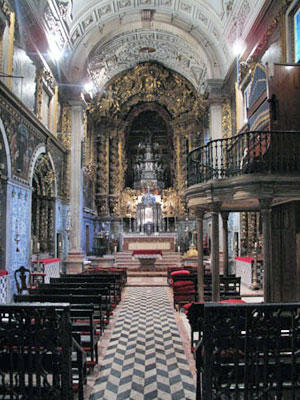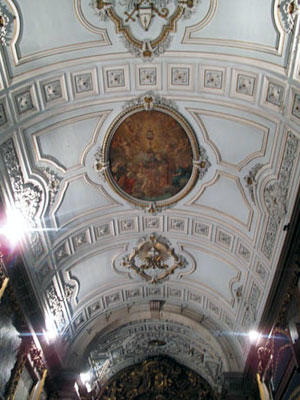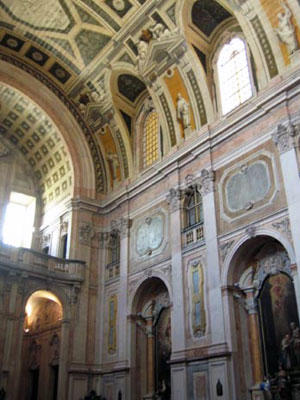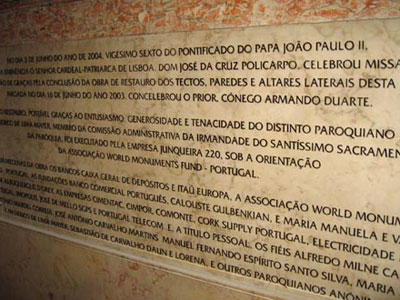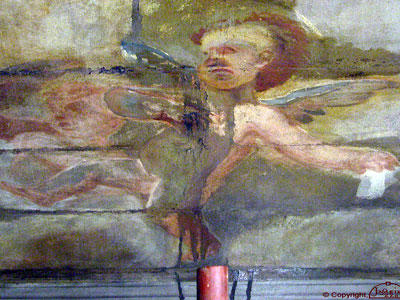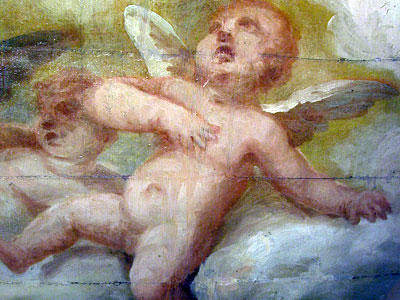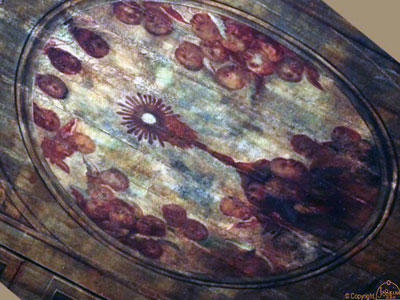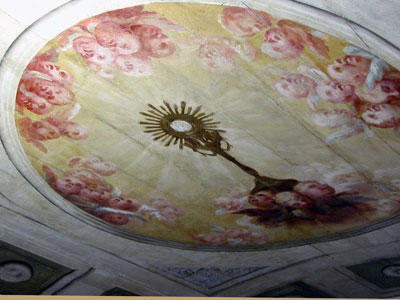Church of Nossa Senhora da Encarnação
Background
The Church of Nossa Senhora da Encarnação was commissioned through the support of D. Elvira Maria de Vilhena, Countess of Pontével (1627–1718), and was consecrated on September 6 1708. The earthquake of 1755 and a subsequent fire caused extensive damage and forced the Santíssimo Sacramento Fraternity, administrators of the church, to reconstruct the building with new interior decorative and artistic plans. Two of the most celebrated painters of Lisbon responded to the appeal for the renewal of the church. Thus Simão Caetano Nunes painted the sacristy ceiling and Gaspar José Raposo, his follower, created the new chancel’s ceiling. One of the highlights of the church is the large painting on the aisle from the Pedro Alexandrino school, another important addition to the eighteenth-century decorative campaign. In 1802, a fire inside the church destroyed the baroque ceiling over the main aisle and, once again, the Santíssimo Sacramento Fraternity was compelled to commission new works for the interior. A new ceiling and new side altars were created by José António Mateus and João Rodrigues, respectively. The inauguration of the new interior took place in 1826.
How We Helped
The passage of time, the smoke from candles, the poor condition of the roof, and other factors contributed to the degradation of the site, making it almost impossible to view these works of art. In addition, with the devastating fire in Chiado in 1988, greasy soot covered every surface of the interior. Conservation of all surfaces was urgently needed. World Monuments Fund and its supporters addressed these priorities and the interior was restored for the enjoyment and benefit of worshippers and visitors to the site.
Why It Matters
Dated from the early eighteenth century, this is one of the most important examples of baroque architecture in Portugal. The effects of pollution and natural erosion on the ceilings of the aisle and the chancel had left, by beginning of the twenty-first century, these valuable artistic treasures in a poor state. The restoration project lasted for a period of ten months, giving new life to these eighteenth- and nineteenth-century paintings for future study and appreciation.

